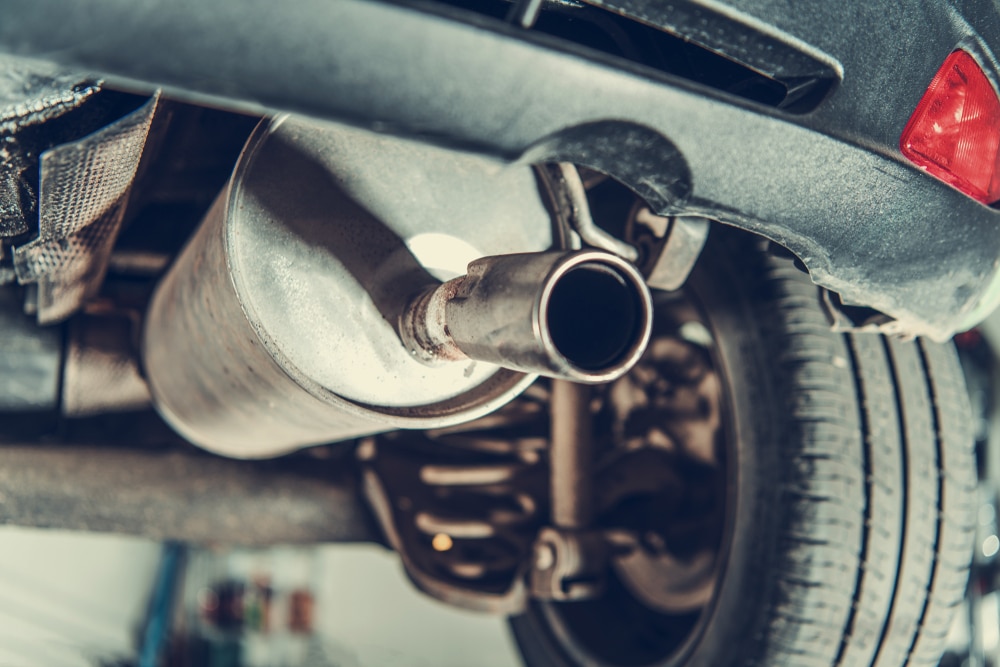
If a California resident owns a diesel vehicle, you must be aware of the California diesel emissions test procedures. This test is required for all diesel vehicles in California, and it helps to ensure that these vehicles comply with state emissions standards. This blog post will discuss the specifics of California diesel emissions test procedures to help you choose the right services from diesel emission test service point, including what is tested and how the test is performed.
All diesel vehicles in California are required to undergo an emissions test every two years. This test aims to ensure that these vehicles operate within the state's emissions standards. The California diesel emissions test procedure includes a visual inspection of the vehicle and a functional test of the vehicle's emission control system.
During the visual inspection, the inspector will look for any obvious signs of tampering or modification to the emission control system. They will also check for proper installation of emission-related components, such as catalytic converters and particulate filters.
The functional portion of the California diesel emissions test includes several tests designed to measure the performance of the vehicle's emission control system. These tests include:
California diesel emissions tests are conducted on various vehicles, including passenger cars, light-duty trucks, medium-duty trucks, and heavy-duty trucks. California also requires that all diesel-powered vehicles be equipped with an emission control device, such as a diesel particulate filter.
All California diesel-powered vehicles must pass a visual inspection before being tested for emissions. The visual inspection ensures that the vehicle's emission control devices are correctly installed and functioning.
California also requires all diesel-powered vehicles to pass functional testing, which is conducted to ensure that the vehicle's emission control devices are operating correctly. Functional testing includes the following tests:
All California diesel-powered vehicles equipped with a diesel particulate filter must have the filter efficiency test performed every two years in addition to the initial California diesel emissions test and biennial smog check.
The diesel particulate filter efficiency test measures the ability of the vehicle's diesel particulate filter to reduce particulate matter emissions.
The California Air Resources Board (CARB) has established that a diesel particulate filter must
If you're a diesel truck owner in California, you must be aware of the new emissions testing procedures that go into effect on January 1, 2018. The new Diesel Particulate Matter (DPM) Test will measure the amount of particulate matter emitted from your vehicle. All diesel vehicles registered in California are required to pass this test starting in 2018, so now is an excellent time to familiarize yourself with the process. We've put together a guide outlining everything you need to know about the DPM Test, so be sure to check it out. Stay informed and stay compliant - that's our advice for owners of diesel trucks in California, USA
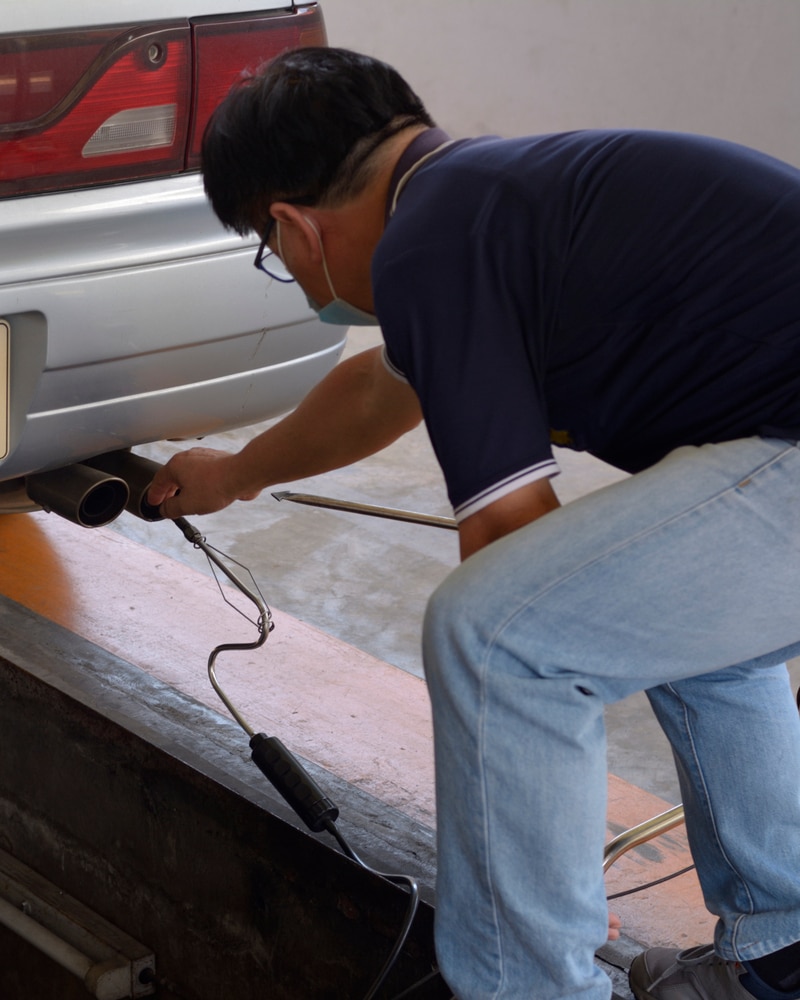
If a California resident owns a diesel vehicle, you must get a Diesel Smog Check periodically. Diesel vehicles produce more smog than gasoline-powered cars, so it is essential to ensure they are operating correctly and not emitting harmful pollutants into the air. In this blog post, we will discuss the specifics of Diesel Smog Checks in California and provide tips on preparing your vehicle for testing so that you can take the right decision before going to the smoke check service center.
The Diesel Smog Check process in California is similar to the regular Smog Check procedure. However, there are a few key differences that you should be aware of. First, only certain types of diesel vehicles are subject to testing. For example, diesel trucks that weigh over 14,000 pounds and buses that seat more than 15 people are exempt from the Diesel Smog Check program. Second, the testing equipment used for Diesel Smog Checks differs from those used for regular Smog Checks. The purpose of the Diesel Smoke Test is to measure the opacity of the exhaust fumes emitted by your vehicle.
California issues two different types of certification stickers after a successful Diesel Smog Check:
A "Pass" sticker indicates that your vehicle meets California's emissions
All diesel vehicles model year 1997 and newer with a Gross Vehicle Weight Rating (GVWR) of 14,001 pounds or more are required to get Diesel Smog Checks. The Diesel Smog Check involves two parts:
The visual inspection is a quick check of the vehicle's emission control system to ensure no apparent problems. The functional performance test is a series of tests that measure the number of pollutants the vehicle emits.
If you register a diesel-powered vehicle in California for the first time, you will need to get a Diesel Smog Check. Diesel Smog Checks are required for all diesel-powered vehicles manufactured on or after January 01, 1998, and Diesel Smog Checks are not required for diesel-powered vehicles that are six model years old or newer. Diesel Smog Checks are required every other year when renewing your vehicle registration. If your diesel
Diesel-powered vehicles that are six model years old or newer and have a GVWR of 14,001 pounds (lbs.) or more are required to get a Diesel Smog Check every other year when renewing their vehicle registration. Diesel Smog Checks for these vehicles are not required if the vehicle is four model years old or newer and has.
Diesel Smog Check in California is required for all diesel-powered vehicles registered with the DMV. The Diesel Smog Check aims to reduce emissions from these vehicles.
Here are some tips to help you prepare your vehicle for Diesel Smog Check testing:
A diesel smog check is required for all diesel vehicles in California. The test aims to ensure that your vehicle meets emissions standards and does not contribute to air pollution. If you need a diesel smog check, we can help. Our team of experts will take care of everything for you so that you can rest assured that your vehicle meets regulations. Give us a call today to schedule an appointment in California, USA
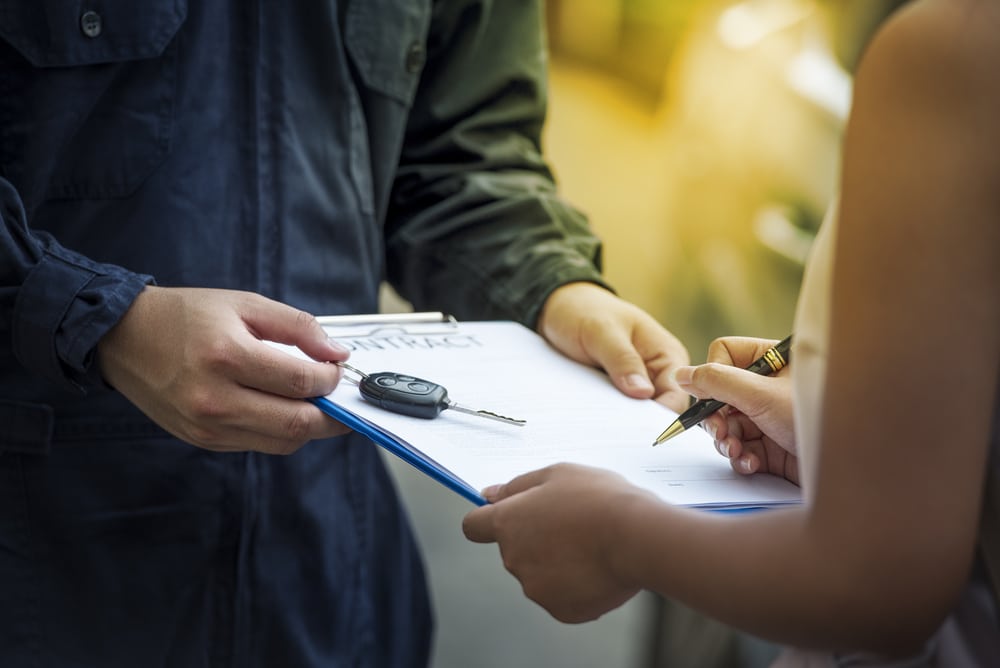
When you move to a new state, there are a lot of things that you need to take care of. One of the most important is transferring your vehicle title. This California DMV Title Transfer Guide will walk you through the process. We will cover everything from what documents you need to how much the fees cost. So whether you're moving to California or selling your car, this guide has everything you need.
The first step in any California DMV title transfer service is ensuring you have all the required documents. These include:
If you are missing any of these documents, the DMV will not be able to process your title transfer. So make sure you have everything before you head to the DMV.
Once you have all your documents, the next step is transferring the title. It can be done either in person or by mail. If you choose to do it in person, go to your local DMV office with all your documents, and they will take care of everything for you. If you choose to do it by mail, send all of your documents to the Department of Motor Vehicles Title Processing PO Box 942869 Sacramento, CA, Be sure to include a check or money order for the appropriate fees. The DMV will process your title transfer and mail you the new title within four to six weeks.
California law requires that all vehicles have a smog certification, also known as a vehicle inspection before the title can be transferred. The best way to get this done is to take your car to a California-licensed smog station. You can find one of these by visiting the California Bureau of Automotive Repair website and searching for stations near you. Once you have your smog certificate, submit it along with the rest of your documents when you transfer the title.
The California DMV charges a few different fees when transferring a vehicle title. These include a $15 transfer fee, a $20 smog transfer fee (if applicable), and any back registration fees that may be owed. Include all applicable fees when submitting your payment to the DMV.
The California DMV will require proof of ownership when transferring a vehicle title. The most common way to do this is by providing the California Certificate of Title, but there are other acceptable forms of proof. These include a California registration less than 60 days old, a California out-of-state title, or a California lien satisfaction document. Be sure to check with the DMV to see which forms of proof they accept.
In addition to proof of ownership, you must submit a few other documents when transferring a vehicle title in California. These include a completed Application for Certificate of Title or Registration (Form REG 343), a smog certification (if applicable), and a California Certificate of Title or an out-of-state title signed by the previous owner. You may also need to provide proof of insurance, depending on the county in which you live.
You will need to pay a few fees when transferring a vehicle title in California. These include the $15 title transfer fee, the $25 smog transfer fee (if applicable), and any taxes and registration fees that may be due. Be sure to check with your local DMV office for specific fee information.
If the previous owner of the vehicle died and left the car to you in their will, you may be able to transfer the title without going through probate. To do this, you will need to provide the DMV with a copy of the death certificate, a certified copy of the will, and a letter from the executor or administrator of the estate authorizing you to take possession of the vehicle. You may also need to pay any outstanding fees or taxes due on the car.
The California DMV title transfer guide can be an excellent resource for those looking to change the ownership of a vehicle. The process can seem daunting, but with our help, it can be a straightforward experience. Follow all the steps in the guide to ensure a smooth transition of your car's title. Are you ready to start the title transfer process? Check out our Vehicle Registration Guide for more information.
If you're looking for DMV vehicle registration information, you've come to the right place! This guide will walk you through the process of registering your car in the state of California. We'll provide all the information you need to complete your registration, including what documents you'll need and how much it will cost.
Different things in different states. In some, it's the Department of Motor Vehicles, while in others, it's the Division of Motor Vehicles. Regardless of what DMV stands for in your state, this is the agency you will need to visit to register your car.
If you have any questions about DMV vehicle registration, you can contact your local DMV office or visit the DMV website for more information.
If your car is in DMV, Here's a DMV vehicle registration guide with the required documents and fees.
All you need are the following documents:
You will also need to pay the registration fee, which varies by state. In most states, you can renew your registration online, by mail, or in person at a DMV office.
Keep your registration paperwork in your ca. DMV may also require you to have your car inspected before they issue you a license plate.
The amount you pay for vehicle registration depends on many factors, including:
Some states offer discounts on vehicle registration fees for certain groups of people, such as seniors or veterans. Check with your DMV to see if you qualify for any discounts. You may also have to pay additional fees if you want personalized license plates or if you renew your registration late.
If you buy a car from a dealership in California, the dealer will usually take care of the DMV registration for you. The dealer will usually charge you a fee for this service, which is typically included in the total purchase price of the vehicle. Once the DMV registration is complete, you'll be given your license plates and registration certificate to keep in your car.
If you buy a car from a private seller, you'll need to register the vehicle yourself. To do this, you'll need to visit your local DMV office with the following:
Once you have the required documents and payment, you'll need to complete the DMV application form. This form will ask for basic information about you and your vehicles, such as your name, address, and the make and model of the car. Once you've completed the form, you'll submit it along with the other required documents and payment to the DMV office. The DMV office will then process your application and issue you a registration certificate and license plates for your vehicle. Next, according to DMV regulations, you'll need to affix the license plates to your car. Once you have done this, you are officially registered! Congratulations
The DMV Vehicle Registration Guide for California is a comprehensive resource that provides all the information you need to know to complete your vehicle registration. Whether you're a new resident or need to update your information, this guide will walk you through the process step-by-step. We recommend bookmarking this page, so you can easily access it when needed. If you have any questions, please do not hesitate to contact us; we'll be happy to help.
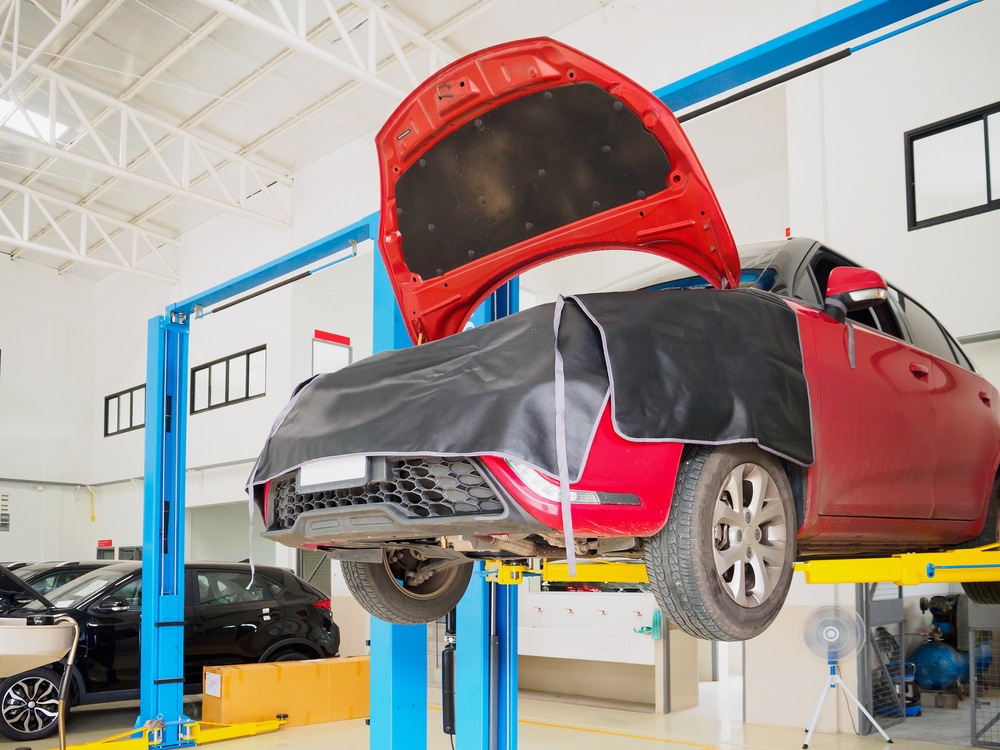
If you're looking for a smog check, it's essential to know the difference between a smog check station and a star station. A star station is an authorized testing center that can perform all the tests required to certify your vehicle. A smog check station is only able to conduct the basic test, which means they may not be able to approve your vehicle. Make sure you choose the right location for your smog check.
A smog check station is a location authorized by the DMV to perform smog tests on vehicles. These stations can only conduct the basic test, which means they may not be able to certify your vehicle. If you're looking for a smog check, choose a star station.
Star stations are authorized testing centers that can perform all the tests required to certify your vehicle. There are two types of star smog stations:
If you're looking for a smog check, choose a star station.
The difference between a smog check station and a star station is that star stations are authorized testing centers that can perform all the tests required to certify your vehicle. So, if you need a smog check, visit a star station. There are several key differences between a smog check station and a star station. Here are five differences between a smog check station and a star station:
If you need to get your vehicle emissions tested, choose the right type of facility for your needs. If your vehicle is new or is considered a high-emitter, you'll want to go to a STAR station; otherwise, a regular smog check station will suffice. And remember that the results from a STAR station will be more reliable than those from a standard smog check station.
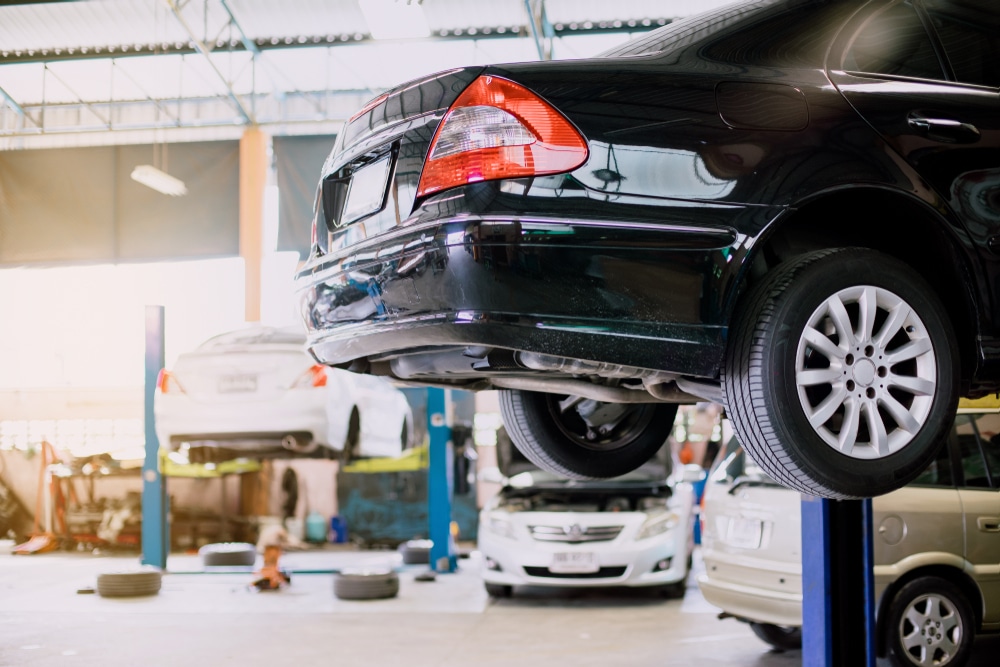
If you're looking for a definitive guide on how much a STAR smog check costs, you've come to the right place. This blog post will discuss the price of a STAR smog check for each type of vehicle. We will also provide tips on saving money on your smog check. So whether you're a first-time driver or need to renew your registration, read on for all the information you need!
All vehicles registered in California must get a smog check every two years. A smog check's purpose is to ensure that your car is not releasing too much pollution into the air. A STAR inspection is a more stringent smog check for certain vehicles.
To get a STAR smog check, your vehicle must be registered with the California DMV. In addition, your car must be under six years old and have a gross vehicle weight rating (GVWR) of less than 14,000 pounds. You will need a regular smog check if your vehicle does not meet these requirements. The cost of a STAR smog check is typically higher than that of a regular smog check service. However, there are some benefits to getting a STAR smog check. For one, you can take your vehicle to any licensed smog station in California. In addition, if your car fails the inspection, you will be provided with free repairs at a participating repair facility.
The cost of a STAR smog check depends on your vehicle type. For example, for the inspection, passenger cars and trucks (under 14,000 pounds) typically cost $29.75. However, if your car is the model year 1975 or older, the inspection will only cost $21.75. On the other hand, if your vehicle is a large truck or bus (over 14,000 pounds), the inspection cost will be $50.00. In addition to the cost of the actual inspection, you may also have to pay a "smog abatement fee." California charges this fee to fund programs that help reduce air pollution. The smog abatement fee is currently $20.00 for most vehicles. However, it is essential to note that this fee is subject to change, and you should check with your local DMV office to find out the current amount.
Not all vehicles are required to get a STAR smog check. In general, only cars that have been identified as high polluters are selected for this type of inspection. However, there are some exceptions to this rule. For example, suppose you live in some regions of California, USA (like the South Coast Air Basin). In that case, your vehicle may be selected for a STAR smog check even if it does not meet the criteria for being a high polluter. Additionally, certain types of cars (like diesel-powered) are always subject to getting a STAR smog check regardless of location or pollution levels.
The cost of a smog check can vary depending on the type of test required. For example, a STAR smog check, the most rigorous and comprehensive examination, usually costs more than a standard smog check. However, many locations offer discounts for seniors and veterans, so be sure to ask about any available discounts before you get your car tested.
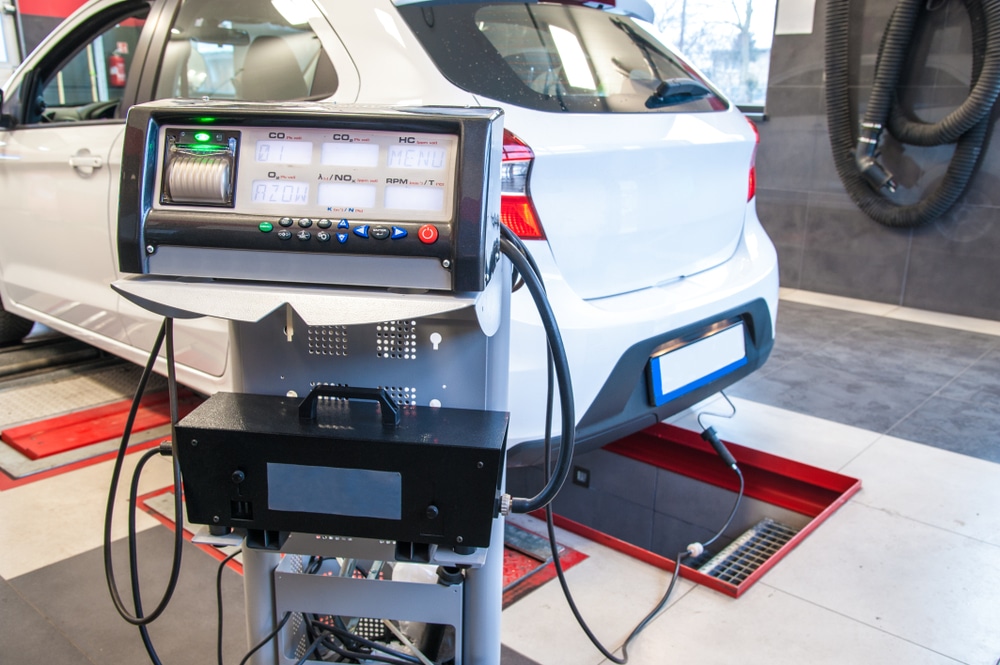
If you're looking for DMV emissions testing near me, you've come to the right place. This blog post will discuss everything you need to know about passing your emissions test. We'll go over the different types of tests, what's involved in each test, and how to prepare for your test. We'll also provide a list of DMV emissions testing locations near you. Let's get started!
There are two different types of DMV emissions tests:
The tailpipe emissions test is the most common type of DMV emissions test. This test measures the pollutants coming out of your vehicle's exhaust system. The visual inspection test is a less common type of DMV emissions test. This test involves a trained inspector looking for signs of tampering or defects in your vehicle's emission control system.
It is a less common type of test, but it's still important to know about. This test involves inspecting your vehicle for visible emission problems, such as leaks or cracks in the exhaust system. The inspector will also check to ensure that your vehicle has the proper emissions-related equipment, such as catalytic converters and oxygen sensors. IT involves a trained inspector looking for signs of tampering or defects in your vehicle's emission control system.
Now that you know what types of DMV emissions tests are available let's talk about where you can get them done. The best place to get your DMV emissions test is at a certified testing center. You can find a list of certified testing centers on the DMV website. If you can't make it to a certified testing center, you can also get your emissions tested at many auto repair shops and gas stations. Once you've found a testing location, call ahead and schedule an appointment. It will help you avoid long wait times and get your test done quickly.
As someone who has recently gone through the process of getting their car emissions tested, I know it can be a bit daunting. Especially if you don't know what to expect. Here are a few tips on how to make sure your car passes the test:
If your "Check Engine" light is on, you will not pass the emissions test. The easiest way to get the light to turn off is to take your car to a mechanic and have them fix the problem.
If your engine oil is low, it can cause your car to run less efficiently. Therefore, regularly check your engine oil level and top it off when necessary. You should also use the recommended type of oil for your car.
Tires play a big role in emissions. If your tires are bald or have very low tread, they will cause your car to slip and spin. It causes the engine to work harder and produce more harmful gases. You should also check the air pressure in your tires. Properly inflated tires will help improve your gas mileage and reduce emissions.
A clean air filter allows air to flow freely into the engine. A dirty or clogged air filter restricts airflow and makes the engine work harder. Replacing a dirty air filter can improve your fuel economy by as much as 14 percent!
If you have an older car, it may beg for a tune-up more often than a newer car. A tune-up helps ensure your engine is running as efficiently as possible. As a result, it saves you money at the pump and reduces emissions.
Leaks in your fuel system can cause your car to run less efficiently and produce more emissions. You should check for leaks in your engine's hoses, gaskets, and seals. You should also check for leaks in the exhaust system. These leaks can be dangerous and should be repaired immediately.
Emissions testing is an important part of being a responsible driver and keeping our air clean. Following the simple tips in this post, you can ensure your car is ready for its emissions test and pass with flying colors. In addition, our team of experts is standing by to provide you with emissions testing in San Jose that is fast, accurate, and affordable. So give us a call or visit our website today.
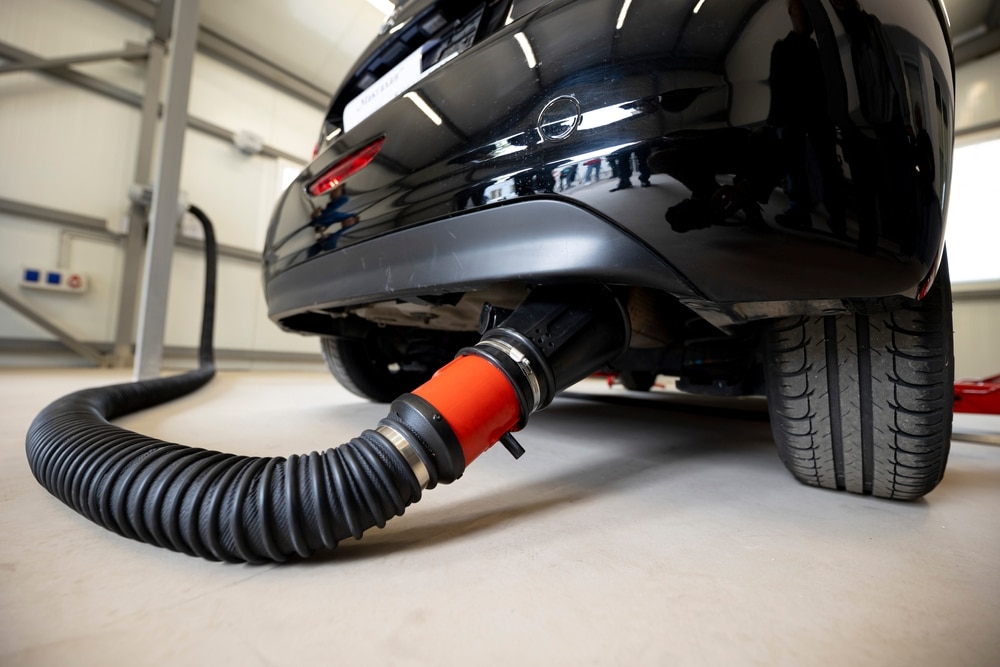
Looking for a smog inspection near you? Well, you've come to the right place! This blog post will teach you how to find the closest smog check station to your location. We will also provide a few tips on preparing for your smog inspection. Keep reading for more information!
If you are looking for smog check near me, here are some tips that can help you:
You can use a search engine like Google or Bing to find smog test centers near you. Type in "smog check near me" and your city or zip code into the search bar. It should give you a list of smog test centers in your area. You can also try searching for "smog inspection near me" or "vehicle smog check near me."
Another way to find smog test centers near you is by using an online directory. This website allows you to search for smog test centers by city, county, or zip code.
If you don't want to search online, you can always call a local automotive shop and ask if they know of any smog test centers in the area. Chances are, they will be able to point you in the right direction.
If you have friends or family members who have recently had their car smogged, ask them where they went and if they were happy with the service. They may even be able to give you a smog test center recommendation.
Check with your local car dealership to see if they offer smog checks.
Many dealerships have smog test machines on-site and can perform the test while you wait. However, they may charge more for this service.
Smog inspections are usually quick and easy. However, there are a few things you can do to make sure the process goes smoothly:
It will help ensure that your car's engine is warm enough to provide an accurate smog reading
Idling for more than a minute or two can impact your smog results. If you must idle, do so for as short a period as possible.
One way to help reduce your car's smog-forming emissions is to ensure it is properly tuned and maintained. It includes regularly changing your oil and checking your tire pressure. Keeping your car in good working order can help protect the environment and save money on repairs down the road.
Another way to reduce your car's smog-forming emissions is to ensure your tires are properly inflated. It helps improve fuel efficiency and prevents premature wear on your tires. You can check the pressure of your tires with a tire gauge or by visiting a nearby gas station.
Keeping your car in good working order can help protect the environment and save money on repairs down the road. It includes regular oil changes and tune-ups and keeping an eye on your car's fluid levels. Of course, it would be best if you also had your car inspected for smog regularly.
If you're in need of a smog check in San Jose, be sure to search for a nearby station. It's important to get your vehicle inspected regularly to ensure that it's running smoothly and safely.
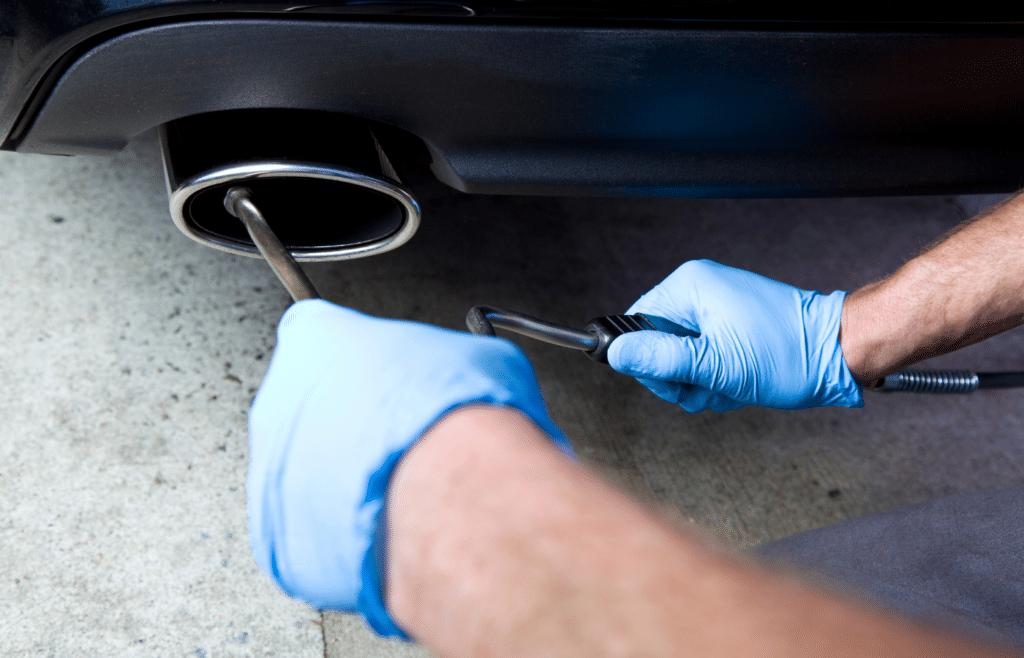
Smog testing in San Jose is a way to protect both the environment and your car. When a smog test is done, it checks for pollutants in your vehicle's exhaust. This can help you avoid getting a ticket from the police, but it's also important for the sake of protecting both you and the planet.
Here are some reasons why:
Emissions are chemicals that are released into the air. Cars, factories, and power plants release emissions into the environment. These chemicals can be harmful to your health and the environment. Not all emissions are bad for you; carbon dioxide is an example of a harmless emission that's essential for life on earth to survive.
Smog tests make sure your car isn’t putting out too many harmful pollutants like nitrogen oxides (NOx) or volatile organic compounds (VOCs). They also make sure you don't have leaks in any of its parts—which will reduce toxic fumes from escaping into the atmosphere when you're driving around San Jose!
Smog tests ensure that your car is in good running condition. The test will check:
Smog tests in San Jose, CA can range in cost from free to $70 or more, but they're often inexpensive and easy to obtain. Some states offer smog testing for free, too! If you fail a smog test and have to pay for repairs at a repair shop, except that the price will come out of your pocket. The good news is that some states offer free smog tests for low-income households.
You can help save the environment by doing your smog test. The cleaner the air is, the safer it is for everyone to breathe. You will also save money in the long run because you won't have to pay for expensive repairs later on if your car fails its smog test.
Smog testing helps ensure that both you and others are safe when driving around with a vehicle that could potentially cause harm to people or property. If you care about yourself and those around you, then consider taking action now and searching for "smog testing stations near me"!
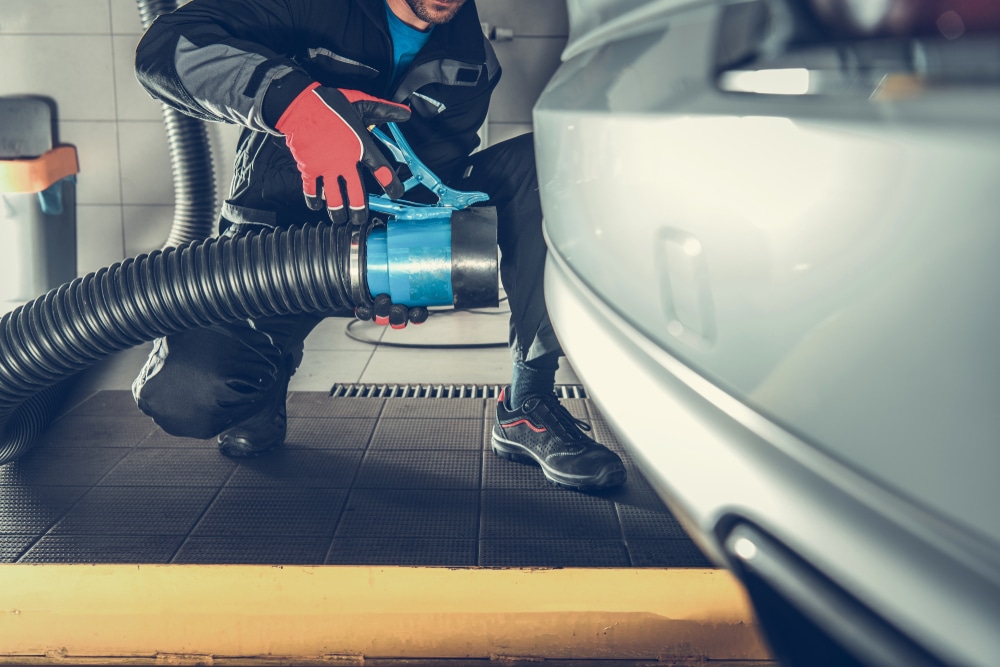
If you're looking for a smog test in San Jose, you will want to know what to expect. In this blog post, we will provide essential information about smog testing in San Jose so that you can prepare yourself before going in for your test. We will cover the types of tests offered, prepare your vehicle for testing, and what happens after you take the test. Let's get started!
The California Smog Check Program is a statewide program designed to improve air quality by reducing emissions from vehicles. The program requires all vehicles registered in California to have a smog check every two years unless the car is exempt. Vehicles exempt from the smog check program include electric cars, hybrids, natural gas-powered vehicles, and certain diesel-powered cars.
All vehicles registered in California must have a smog test every two years. However, there are some exceptions to this rule. For example, if your car is less than six years old or designated as a low-emission vehicle, you may be exempt from testing. You can check your vehicle's registration card or visit the California DMV website to determine if your car is exempt from smog testing.
Your vehicle must meet the following requirements to pass the San Jose smog check:
If your vehicle does not meet these requirements, you will fail the smog test and will need to get your car repaired before retesting.
The smog test fee in San Jose is $20.00 for most vehicles. However, if your car is diesel-powered, RV, motorcycle, or gross polluter, the smog test fee is $30.00. Payment methods accepted at the San Jose smog check stations include cash, checks, and major credit cards. Test results are usually available immediately, and a certificate will be issued if your vehicle passes the smog test. If your car does not pass, you will be given a list of recommended repairs that need to be made for your vehicle to pass the next time it is tested.
The process of smog testing in San Jose is quick and easy. The entire process takes about 20 minutes, and all you need to do is drive your vehicle to one of the smog check stations in San Jose. Once you arrive, a technician will perform a visual inspection of your car to make sure it meets the requirements for testing. Next, the technician will attach a hose to your vehicle's tailpipe and measure the emissions coming from your car. If your car passes the test, you will be given a certificate that you can take to the DMV to renew your registration. If your car does not pass, you will be given a list of recommended repairs for your vehicle to pass the test.
There are several different places to check your vehicle smog in San Jose. Smog Hut Star Station and auto repair shops offer smog check services, so you should be able to find a convenient location. You can also search online for "smog test centers near me" to see a list of nearby places.
When you take your vehicle in for a smog test, the technician will hook it up to a machine to test the emissions. The process usually takes less than 30 minutes, and you will be able to wait in the waiting room while your vehicle is being tested. If your car fails the smog test, you will need to get it repaired and return it for a retest. Remember, you can take your vehicle to any repair shop or smog center for repairs. Once your car has been repaired, you can take it back to the same station or a different one for a free retest. Remember, it is important to get your vehicle repaired as soon as possible to avoid penalties.
San Jose is certainly a great place to live if you're in the market for a smog check. It won't be hard to find one convenient for you with so many locations to choose from. Keep this information in mind when it comes time for your next smog test.
Located in San Jose, CA , United States York Tire & Auto Service tests and services vehicles that have failed their emissions test. Call us todayy.